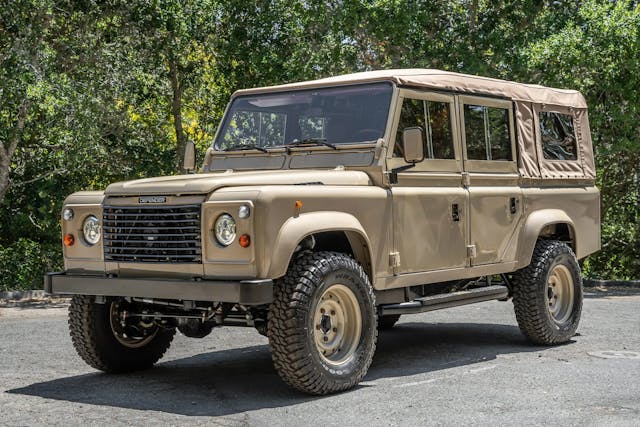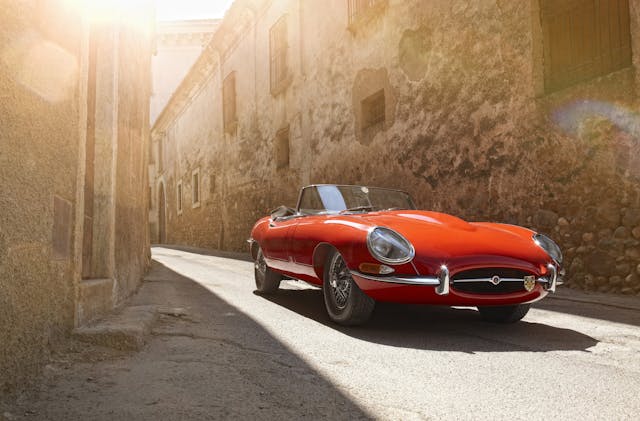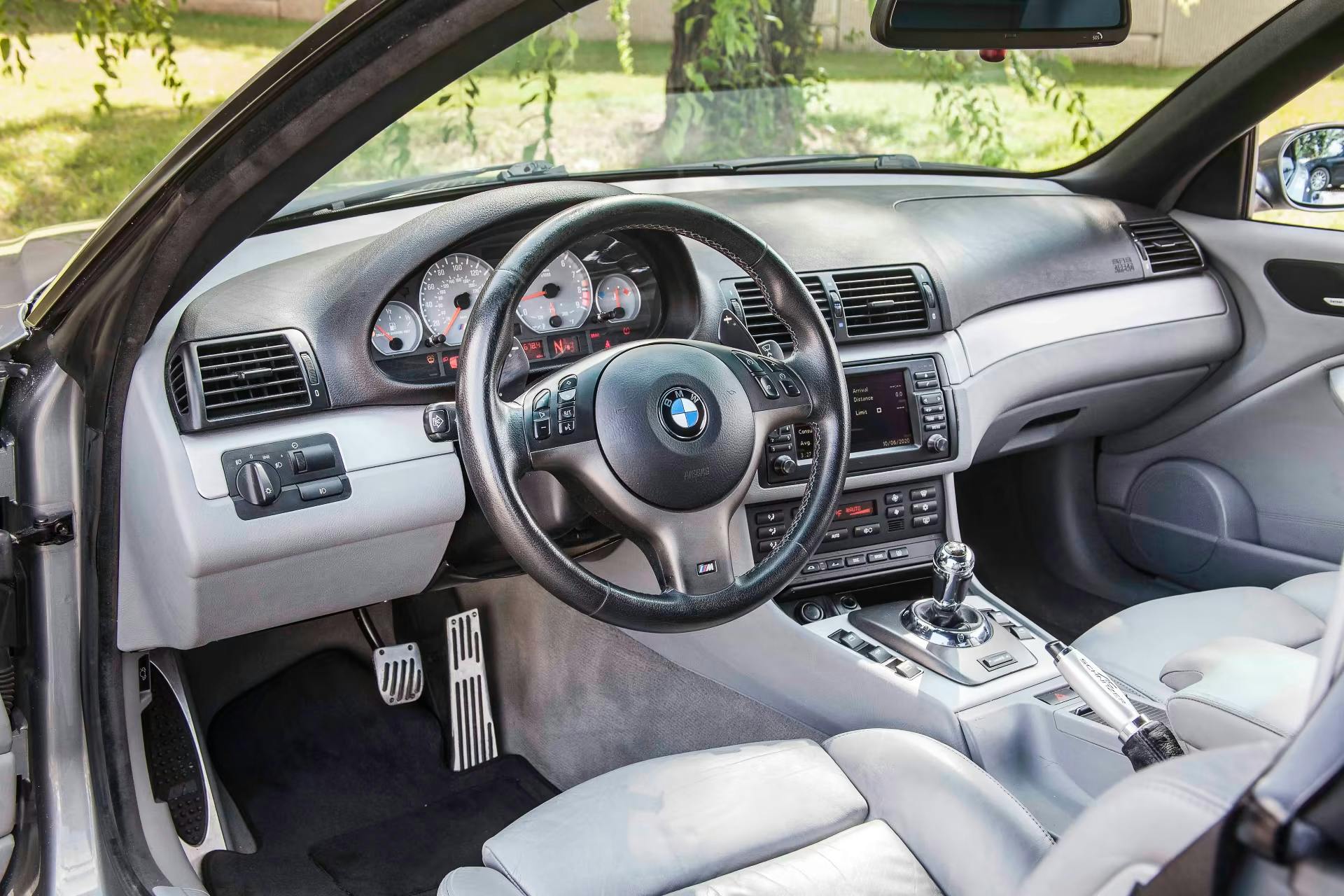3 classics with Achilles’ heels, and how to heal them
Most of us are familiar with the Greek myth of Achilles. His mother dipped him in the River Styx, rendering him invulnerable (almost). Presumably, to keep him from drowning before he could become God-like, Achilles’ mom Thetis had to hold him from somewhere, and his heel presented the most convenient handle. Since she neglected to perform a follow-up dip on the back of that foot, the proverbial “Achilles heel” has come to signify a weak spot in a person, or a fatal flaw in machinery.
Some of my favorite old cars probably have a pair of Achilles heels, and maybe an Agamemnon wrist or two if that were a thing. But unlike the fatal flaws of epic characters gone by, surely a clever wrench with a plan can overcome vehicular weaknesses to make the perfect classic, right?
Jaguar E-type (Series I )

I’ve owned what many people think of as the Achilles of sports cars. The Series I Jaguar E-type has a reputation for being almost god-like in its beauty, but painful to own, a car as reliable as the average drunk person on New Year’s Eve. I loved mine so much that I was insane enough to explore trying to make it work as a daily driver.
The pain points of the car were well-documented: An inefficient radiator and insufficient airflow caused the car to overheat in traffic on 70 degree days. The Lucas alternator lacked the juice to simultaneously operate the lights, wipers, and blower, and also failed outright with alarming regularity. The SU electric fuel pump had points, much like the also-unreliable ignition system. But there were cures: a modern aluminum radiator, and a huge electric fan allowed the car to idle on 90 degree days. A GM single-wire alternator provided a charging system that did its job, and solid-state ignition system and fuel pump banished the odd roadside breakdown. For over a year, I daily-drove the Jag and enjoyed Camry-like reliability in what is normally one of the most fickle cars of all time.
BMW E46 M3

An entire epic saga could be written about British electrics, but automotive weaknesses unfortunately aren’t limited to one nation or era. Enter the BMW E46 M3, an astonishingly good driver’s car. The last M3 with a naturally-aspirated straight-six, it had the misfortune of being built when manual transmission take rates had begun to plummet. BMW came up with what it thought was a sufficiently sporty compromise: the Sequential Manual Gearbox (SMG). Actually a manual transmission with an electro-hydraulically actuated, pedal-less clutch, you shifted the SMG either with paddles, or by moving the shift lever forwards or backwards. The box could shift on its own as well.
Alas, it hasn’t aged well, and many joke that SMG actually stands for “Serious Money Gone.” The hydraulic pump that operates the clutch is one of the culprits, costing thousands to repair. Even when working properly, the quality and speed of shifts pale in comparison to a modern dual-clutch automatic. But thankfully, the cure for this particular Achilles heel is easier than you might think, given that BMW simply automated their manual transmission. The row-your-own conversion is a matter of removing the pump that automates the clutch engagement, sourcing an OEM clutch master cylinder, pedal cluster, and a shifter, and re-programming the ECM to tell the car that it’s a conventional manual. The whole thing can be completed for $3,000 to $4,000 depending on whether or not you need a new clutch, and according to Hagerty transaction data, manual-converted M3s typically see their value go up in the marketplace.
Land Rover Discovery

Even tough off-roaders aren’t immune to weaknesses, and the original Land Rover Discovery is the perfect example. Boxy and upright with an air of understated upper-crust British luxury, Discoveries are totally capable off-road, but they’re also pitifully unreliable. That’s surprising, given the heart of the car is an American engine—the aluminum ex-Buick, Oldsmobile, Pontiac V-8. Ancient tooling and a series of displacement increases took their toll, and Discos have become famous for mixing coolant and oil in creative ways. Popped cylinder liners, cracked blocks, warped/cracked heads, the list goes on. While LS swaps are almost a cliché by now, if ever there was a platform tailor-made for one, it’s the classic Discovery.
The Disco has more than one Achilles heel, though. In addition to the engines, power-steering racks leak, ABS systems fail, cooling systems are dreadful, the list goes on. If you happen to test drive a Disco with no dash lights on, feel free to peel off the electrical tape covering them.

Numerous shops specialize in everything from simple powertrain swaps to nearly complete remanufacturing of Discos. And while the cost can be staggering—as much as a new Land Rover Defender—you can have a bulletproof classic Land Rover that you can actually trust to go off-roading or camping with. There’s a certain cachet in daily driving a classic, and a sense of accomplishment in the fact that you were able to do what Thetis wasn’t able to do for Achilles.
***
Check out the Hagerty Media homepage so you don’t miss a single story, or better yet, bookmark it. To get our best stories delivered right to your inbox, subscribe to our newsletters.





An actual license-plate frame seen on an E-Type at a car show: “Ah, but when it runs!”
A friend had an E type coupe v12. Car was stunning in Kelly Green with tan interior. It looked like it was flying standing still which was always. He said it was just like a hound dog, went everywhere in the back of a truck and left puddles everywhere it was.
I’ve owned my triumph tr 6 for 15 years and I love her no need for a radio just listen to her our as for the jag E type I could own one even if it didn’t have an engine just so I could look at it such a beautiful piece of machinery
The criticism of the E Types, in my humble opinion, is unjustified. I have owned E Types since the early 70s and currently have a 66 rdstr., 66 coupe and 67 rdstr. that I have owned since the 80s. My wife drove an E Type daily to work for 12 years in Phoenix area with a stock cooling system. I don’t recall her having any problems. None of them have ever had an engine rebuild and none have had the Alternator or distributor replaced and I would drive any of them across country anytime if I wanted. We have done many thousands of miles in them and they have never let us down. They are truly lovely cars and one of the most iconic cars ever built. The Jaguar 6 cylinder DOHC is one of the best engines ever built. I once knew someone who had an E Type and always complained about it running hot. After complaining about it for years he finally asked me to look at it to find out what could be done. I removed the radiator cap and found it had the wrong cap. It was too short and not seating. It would get warm and push out all the coolant and overheat! I put a new cap on it and it ran perfect. Sometimes the problem is not the car but the loose nut between the steering wheel and the seat!
Even though I like looking at a Defender more than a Discovery, it would probably be better to have a picture of a Discovery in the article.
Jaguar has a number of issues.
Cooling, dropping valve seats, electrical and more. This is why so many have Chevy or inline Pontiac engines today.
Rust is also a problem.
The BMW is a money pit.
The V-12 had more problems with valve seats than the XK engine. Rust is a problem with so many 60’s vintage cars ( look at 70’s Fords. Putting a Chevy 6 in an XK-E would be even worse than a SBC in an XJ-S and that’s considered a “ lump”
Tom, how about the computer setting between the cyl banks. Mine crapped our 100 miles from home. What an awful car. ………Jim.
The first picture is a disco
The E-Type is one car that could lure me out of my general bottom-feeding with cars. I would of course want one less than perfect, and I would implement the suggested mods. The appeal of the Land Rovers is one that I never quite got and I suspect the badge has more to do with the appeal than the vehicle under it. They don’t have much of a different appeal than a Jeep or old Bronco, except that they are more expensive and seem to be less well made
I never understood the appeal of The Discovery. After you change the motor, cooling system, power steering, abs,…..Then you have a nice vehicle? That must be some special chassis.
One could buy a Nissan Xterra with a full frame and a low geared transfer case for the cost of changing the steering rack alone.
In other words, replace everything mechanical.
Agreed. My Fargo winter beater is a lifted, ex-plow/work truck bought from a friend’s employer. Before sold to me, had a rebuilt 6.2, brand new transfer case, and rebuilt transmission installed; all the extra lights and antennae were removed and holes plugged. It has what I most wanted, “barn doors” instead of a lift gate, it’s a “heavy half” with an auxiliary fuel tank, and up 4″ with 20″ AR rims and Hankook tires, auto start & block+trans pan heaters, it’s perfect for winters in North Dakota. In 11+ years I’ve never been stuck and have rescued countless AWD Asian crossovers and SUVs. Downside? It came with that brittle mid ’00s GM white paint, that chips if you look at it hard- actually, it just falls off if you think about it. So I have the look of a Liberian registered tramp freighter, with rust streaks (and actual pinholes in my hood!) down the flanks, but I didn’t buy it to look at it, I bought it to get around in deep snow, ice, and 40+ mph winds with 60+mph gusts. Yon Tahoe looks junk, but is as reliable and unbreakable as an anvil, manages 13mpg in way below zero F temps, and runs a 210° F thermostat to the front and rear(!) heat… did I mention the barn doors? Why anyone would risk a Disco in North Dakota is beyond me. Tahoe= cheap, reliable, always there for you no matter what the weather.
50 years ago when I was in Zambia it was not uncommon to see a Landy on the hook behind a “Crusher” or even a Hilux or a Stout or a Dyna – but VERY uncommon to see the Landy on the front of the chain!!!! For a short time I had the use of a (apparently VERY RARE ) Landrover “swamper” – the big six cyl high clearance long bed “pickup” style Series 2A or 3 – (both had headlights in the wings) (I believe it was also referred to as the One Ton – using a modified Series 2B Forward Control chassis). It was an ideal unit for it’s owner to get in and out of South Luangwa in the rainy season – it would almost climb a rock wall if it could find traction – WHEN it ran – – -. That thing would be worth a king’s ransom if it was still mobile today – – – –
I had the e46 m3 with SMG. Thought it was awesome. I think it will be the one to have someday, like the twin cam MGA.
I still have my MG Twin Cam i bought in 1966..doubt the SMG trans will have the same allure in the years to come
I agree with you . I had an early 04 Z4 with the SMG and never had any problems with it at all. Loved the way I could hit the country lanes and flick up and down through the gears. Would have another one if I could find one
There is a benefit to the smg over the true manual gearbox. Most E-46 manuals, M3 or standard models, were plagued with the rear suffrage literally ripping out of the car. Which necessitated substantial welding and reinforcement, often involving tearing into the trunk area as well as reinforcement of the rear shock towers. Having done several of these, the amount of work often overrides the car’s market value, so most people won’t even take on the task. For me, a manually shifted anything is far superior to the pseudo techno-junk paddle shift or techtronic bull.
Thats just amazing that on a modern car like the BMW would have structural failures like that!!!! WOW! Now I have even more reasons to hate BMW engineers!!!
I owned an E46 M3 with the SMG for 15 years. I loved it. No maintenance issues at all. The problem is that it requires skill and experience to operate it smoothly — more skill than a full manual with a clutch pedal. Reviewers who drove the car for a few days or weeks never figured it out, preferring to whine about it. It took me a few months to learn what the shift programming would do under different conditions of braking and accelerating, and I got better at it over time.
Yeah, it’s hard for me to think that I would turn down owning the Jag because of its several (many?) heels. If it never ran, I could just park it in my living room and sit in my easy chair looking at it every day until bedtime.
I’d sit in the Jag instead of the easy chair. And maybe make motor noises.
Not a bad idea, but I’d have to have walls made of mirrors so I could both sit in it AND see its sexy curves at the same time!
Getting into and out of an early XKE coupe for a six foot guy is quite the challenge. That was a car I loved at first sight but once I tried to drive one I gave up. The later years just looked ungainly in comparison the the first edition. They were a work of art but mainly for folks under 5 foot nine.
Those early E Type Jags- I prefer the roadsters- are what sex would look like as a car. I have a very detailed 1/8th scale model that took me a year to build, it has pride of place on my display mantel simply because it’s gorgeous to gaze upon.
Can we nominate other candidates? Mine is the third-gen (FD) Mazda RX-7. Obvious heels are engine heat and … um … engine :-). I’m not suggesting a swap for a piston engine (heaven forbid), but the cooling and reliability mods that long-term RX owners invariably make.
I had a Porsche 968 with a Mazda rotary swapped IN by a Boeing engineer!
Reading British CAR magazine will convince you that all things British are the best. Reality will convince you that the reality is alarmingly different. Great article, and I have sent it to all my Land Rover driving British friends.
Try reading Practical Classics. The British are under no illusions about their domestic car products. Allegro, Maxi, Marina, Hillman Imp. I could go on…
French & Italian cars have their quirks (I’m being kind here) and even German ones have lost their aura of invincibility. My Japanese daily drivers have all been great.
I’d say that anything built by Chrysler/Stellantis is a victim of substandard electrical components. Every one I’ve driven or owned has had weird electrical gremlins, whether it’s bad switches and wiring, recurring burned-out fuses or lamps, or intermittent “NO BUS” errors.
My experience with90s and 2000s Fords – particularly those with british/european roots like the Mercury Mistake. With the 32 valve engine it was “da bomb” and other than the plastic water pump impeller fiasco virtually every problem I had with mine ( not many, but irritating when they happened!!) could be traced to a bad connection, switch, or relay. My Chryslers of the era all had MitsuShitty engines – say no more – – –
Gotta love the “easy fixes” lessee
Replace radiator, fan, electrical, etc…
$3-$4k manual conversion….
Simple power train swap…
Near complete remanufacturing…
And every year it gets more expensive IF you can find someone capable & willing to do the job.
Pretty much encapsulates why I am down to one classic from three and that one is as straightforward as American muscle car as you could find. Will probably say goodbye to that one soon.
BMW SMG is one I’d swap out the parts to go manual.
The English car makers (and their dutifully nationalistic auto writers who blithely overlooked dependability issues in their breathless road tests of new cars on sunny days) never could figure out why Americans demanded cars to be reliable…
I guess they were still in the mindset that only the wealthy drove and surely there must be another motor in the stable.
Which is why the UK auto industry is a shadow of its former self with nearly all the great marques being foreign owned.
What about the USA motor industry now ? Detroit etc .
The Brits are a nation of “tinkerers”, they would rather work on their cars than drive them. Given their pathetic excuse for roads, and being on an island there’s really no place to actually GO, they may as just wrench, wash & polish their cars !
Really some can drive an hour and be driving in Europe! Chunnel anyone?
In my long lost youth, my step father owned a 1974 Triumph Spitfire. It was shipped without brake fluid, so immediately on arrival at the dealership the entire braking system save for the rotors had to be replaced- salt air corrosion, donchakno. But the Ferguson tractor derived 4cyl and the trans/rear axle were anvil like in their reliability, for the three decades stepdad owned it the electricals functioned as designed, and other than needing a battery every third year the Spitfire was unremarkable in its maintenance needs. The clutch was a two hour replacement, unlike my ’67 Impala SS396 that had the heaviest components GM could make, requiring floor jacks and upper body strength.
Spit was the scariest car I’ve ever driven. The rear suspension was VW Beetle/Porsche like in it’s treachery, and it was gocart small in a sea of Buick Deuce&aQuarters, Imperials, Newports, Impalas, Bonneville, and Olds 88/98s. Nothing like looking up at a guy in a Camaro or Mustang, or that 18 wheeler wanting to crush you for fun. Still, the Spitfire was very reliable.
The ratio of “cost to fix the issues” to “value of the car” is a no-brainer on the Jag. On the BMW, it’s marginal. On the Disco, it’s a firm “no”.
Really some can drive an hour and be driving in Europe! Chunnel anyone?
Those old jags are sweet. I helped a friend get one running in the late 80s I was big on the single wire GM alternator so I installed one for him. The SU carburetors were no problem. The fuel pump was an issue so we replaced it with a modern electric one; I don’t remember which brand but it came from Napa auto parts(a bastard fix). it ran pretty good was fun to drive, his wife had a fox Mustang 5.0 convertible with a five speed and I preferred to drive that beast! Again mid 80s…
To me the E type design had too high an aspect ratio ( That is span/chord) Too tubular looking. I prefer the Morgans of that era which were possibly more reliable as well.
Except for the three wheelers, I find Morgans to be the most honest and beautiful British cars. That being said, I’d sell my soul for a BRG Morgan AeroCoupe. Dunno why, that car just pushes all my buttons in the right way. BMW V8, manual, odd catfish headlamps in a very ’30s retrofuture body… bring the lottery winnings!
The show “Wheeler Dealers” had an episode where they (specifically, Ant) did the conversion from SMG to fully manual on an E46 M3. Being able to see the process (edited for TV of course, but still provided great info) was extremely interesting.
Saw that one too. Like most of them with Ant really well done. Cost them $5,000 which means a regular person would have to pay $8,000!
Did an smg conversion myself in the garage on jack stands. Took me about 20 hours. All in cost was $2700 and that included remote programming. Love it. If you need a new clutch add $400. Easy job.